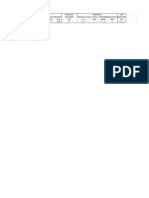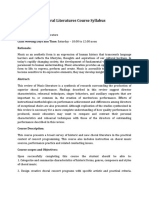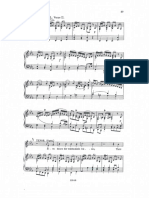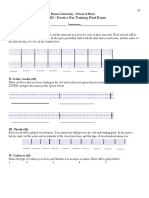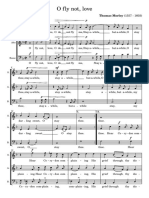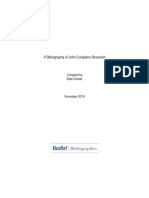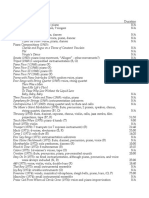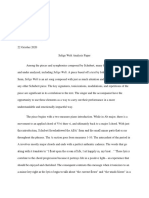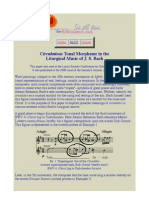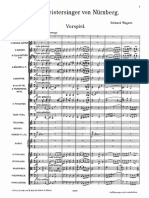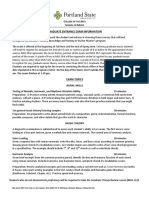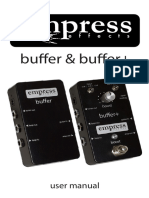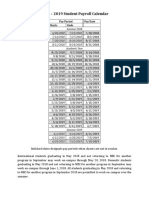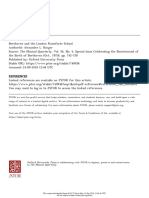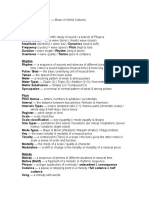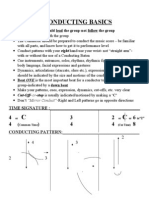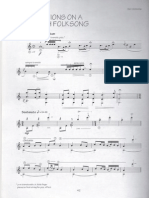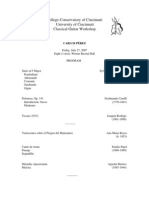0% found this document useful (0 votes)
182 views1 pagePreparation For D.M.A. Entrance Exams
The document provides information about the entrance exams for a D.M.A. program in two parts. The history exam is 1 1/2 hours and covers major facts, composers, works, styles, and theorists from Gregorian chant through the 20th century through short answer and essay questions. The theory exam also lasts 1 1/2 hours and covers common practice theory like species counterpoint and figured bass as well as 20th century techniques like set theory, 12-tone operations, and minimalist rhythmic techniques.
Uploaded by
Jamie MonckCopyright
© © All Rights Reserved
We take content rights seriously. If you suspect this is your content, claim it here.
Available Formats
Download as DOC, PDF, TXT or read online on Scribd
0% found this document useful (0 votes)
182 views1 pagePreparation For D.M.A. Entrance Exams
The document provides information about the entrance exams for a D.M.A. program in two parts. The history exam is 1 1/2 hours and covers major facts, composers, works, styles, and theorists from Gregorian chant through the 20th century through short answer and essay questions. The theory exam also lasts 1 1/2 hours and covers common practice theory like species counterpoint and figured bass as well as 20th century techniques like set theory, 12-tone operations, and minimalist rhythmic techniques.
Uploaded by
Jamie MonckCopyright
© © All Rights Reserved
We take content rights seriously. If you suspect this is your content, claim it here.
Available Formats
Download as DOC, PDF, TXT or read online on Scribd
/ 1



